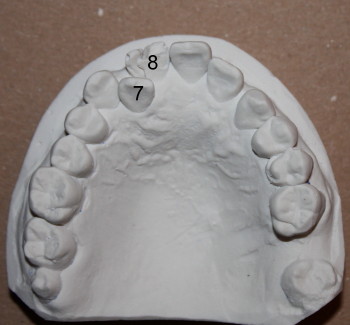
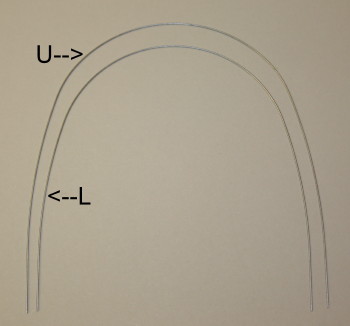
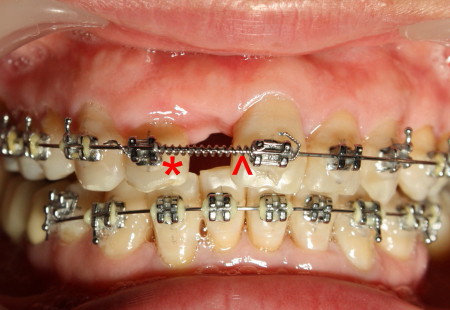
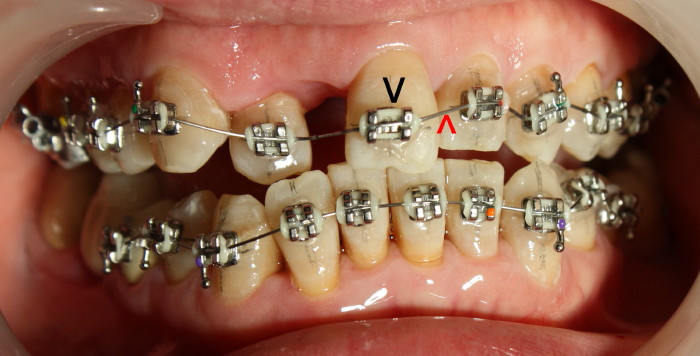
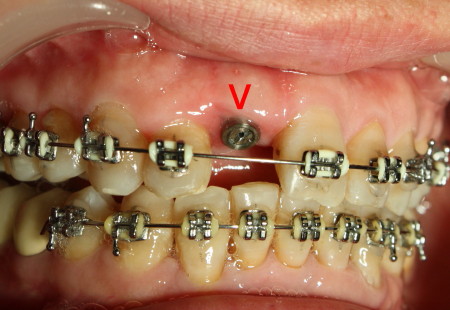
 |
 |
 |
| Fig.1 | Fig.2 | Fig.4 |
 |
 |
|
| Fig.3 | Fig.5 | |
Dental Education Lecture: How Braces Work?
Mrs. Jiang at 40s breaks one of her front teeth (#8 in Fig.1: bite view of upper jaw) at work and needs an implant. Since her teeth are generally pretty crooked (particularly severe overlapping between the teeth #7 and 8), we need braces to straighten up first. In contrast, wires that are used with braces are perfectly rounded up (Fig.2, U for upper jaw, L for lower jaw) and quite flexible. When they are placed into the slot of each brace (bracket: black arrowhead in Fig.3), they are kinked, roller-coaster (red arrowhead). However, the wires have memory, want to return their original shapes and bring the teeth with them. Fig.3 shows that each tooth has its own brace or band (in the back of the mouth). The dentist uses the thinnest and most flexible wires initially and uses thicker and tougher wires step by step. In four months, the teeth look pretty straight (Fig.4). The tooth #7 (* in Fig.4) has been brought forward, but the space for #8 is not wide enough. So we use place a spring (arrowhead), which will gradually separate the adjacent teeth. In another 2-3 months, we have enough space for the missing tooth (Fig.5, as compared to Fig.4) and an implant has been placed (arrowhead in Fig.5).
You can also see some other brace cases.
Xin Wei, DDS, PhD, MS 1st edition 04/13/2010, last revision 12/25/2016